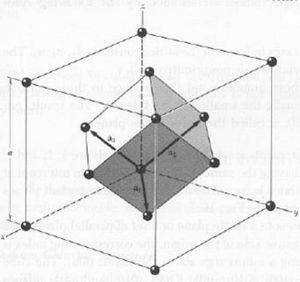Solution to Set 4: Difference between revisions
HollyBrown (talk | contribs) |
HollyBrown (talk | contribs) |
||
| Line 41: | Line 41: | ||
For the Miller indicies (1-10) the x, y, and z intercepts are respectively (1, -1, 0) meaning that there is no intercept on the z axis. This gives rise to the graph | For the Miller indicies (1-10) the x, y, and z intercepts are respectively (1, -1, 0) meaning that there is no intercept on the z axis. This gives rise to the graph | ||
[[Image:Miller_Indicies_2.jpg]] | |||
Revision as of 21:52, 19 March 2009
Problem 1
Cu, density Failed to parse (SVG (MathML can be enabled via browser plugin): Invalid response ("Math extension cannot connect to Restbase.") from server "https://wikimedia.org/api/rest_v1/":): {\displaystyle \rho= 8.885{g\over cm^3}} , atomic mass Failed to parse (SVG (MathML can be enabled via browser plugin): Invalid response ("Math extension cannot connect to Restbase.") from server "https://wikimedia.org/api/rest_v1/":): {\displaystyle m_a = 63.57 amu} , fcc structure
a. In Failed to parse (SVG (MathML can be enabled via browser plugin): Invalid response ("Math extension cannot connect to Restbase.") from server "https://wikimedia.org/api/rest_v1/":): {\displaystyle 1 m^3}
, the number of moles is
Failed to parse (SVG (MathML can be enabled via browser plugin): Invalid response ("Math extension cannot connect to Restbase.") from server "https://wikimedia.org/api/rest_v1/":): {\displaystyle ({8.885 g\over 1 cm^3}) ({1 cm^3\over 5\times 10^6 m^3}) ({1 mol\over 63.55 g}) = 1.40\times 10^5{mol\over m^3}}
b. Atoms in Failed to parse (SVG (MathML can be enabled via browser plugin): Invalid response ("Math extension cannot connect to Restbase.") from server "https://wikimedia.org/api/rest_v1/":): {\displaystyle 1 m^3}
Failed to parse (SVG (MathML can be enabled via browser plugin): Invalid response ("Math extension cannot connect to Restbase.") from server "https://wikimedia.org/api/rest_v1/":): {\displaystyle ({1.40\times 10^5 mol\over 1 m^3}) ({6.022\times 10^{23}\over 1 mol})= 8.43\times 10^{28} atoms}
c. Since the bonds between the atoms are small compared to the diameter of the atom, we neglect the bonds for an estimate. The structure is fcc and the length of each side of the cube is Failed to parse (SVG (MathML can be enabled via browser plugin): Invalid response ("Math extension cannot connect to Restbase.") from server "https://wikimedia.org/api/rest_v1/":): {\displaystyle 2r=362 pm}
, where r is the radius of one Cu atom.
d. Atomic radius
Failed to parse (SVG (MathML can be enabled via browser plugin): Invalid response ("Math extension cannot connect to Restbase.") from server "https://wikimedia.org/api/rest_v1/":): {\displaystyle p = {m_a\over V_s}} , where Failed to parse (SVG (MathML can be enabled via browser plugin): Invalid response ("Math extension cannot connect to Restbase.") from server "https://wikimedia.org/api/rest_v1/":): {\displaystyle V_s = {4\over 3} \pi r^3}
Failed to parse (SVG (MathML can be enabled via browser plugin): Invalid response ("Math extension cannot connect to Restbase.") from server "https://wikimedia.org/api/rest_v1/":): {\displaystyle p = {m_a\over {4\over 3} \pi r^3} }
Failed to parse (SVG (MathML can be enabled via browser plugin): Invalid response ("Math extension cannot connect to Restbase.") from server "https://wikimedia.org/api/rest_v1/":): {\displaystyle r = ({3 m_a\over 4 p \pi})^{1\over 3} = 128 pm}
e. Mass of 1 atom
Failed to parse (SVG (MathML can be enabled via browser plugin): Invalid response ("Math extension cannot connect to Restbase.") from server "https://wikimedia.org/api/rest_v1/":): {\displaystyle (63.57 amu) ({1.66\times 10^{-24} g\over 1 amu}) = 1.06\times 10^{-22}g}
Problem 2
Draw the planes whose Miller indices are (421), (112), (1-10) and (-121). State their intercepts on the x- y- and z- axes.
Miller indicies are used as a way to note planes and directions in crystal lattices. To graph the miller indicies in a cartesian coordinate system, you can use the equation
For the Miller indicies (421) the x, y, and z intercepts are respectively (1/4, 1/2, 1). This gives rise to the graph
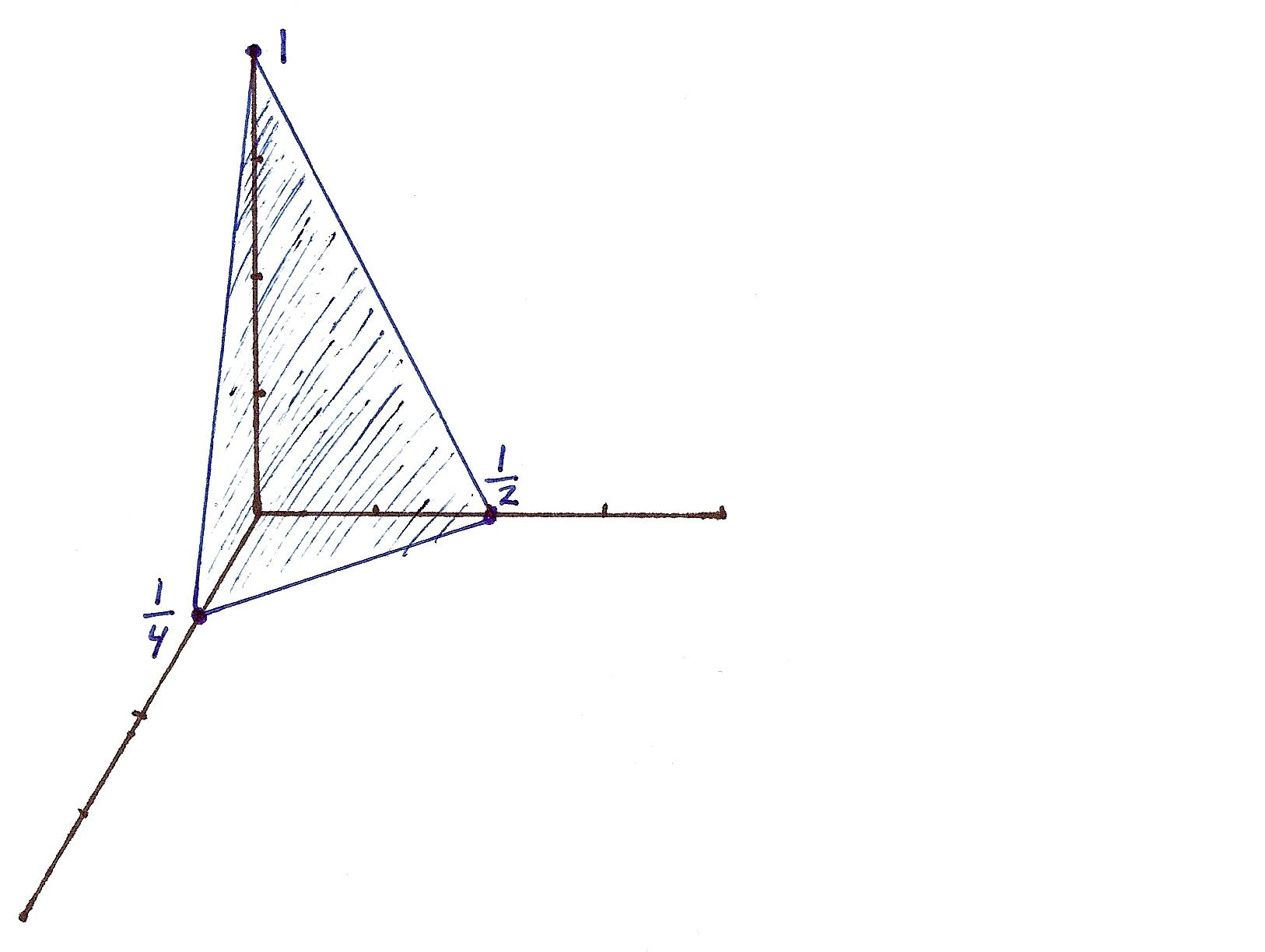
For the Miller indicies (1-10) the x, y, and z intercepts are respectively (1, -1, 0) meaning that there is no intercept on the z axis. This gives rise to the graph
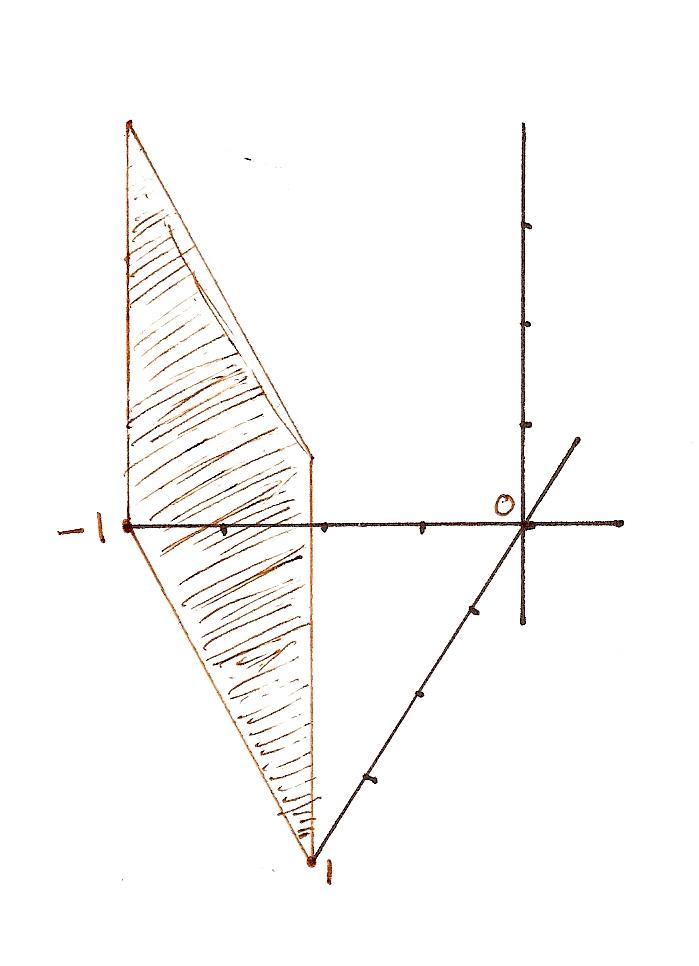
For the Miller indicies (112) the x, y, and z intercepts are respectively (1, 1, 1/2). This gives rise to the graph
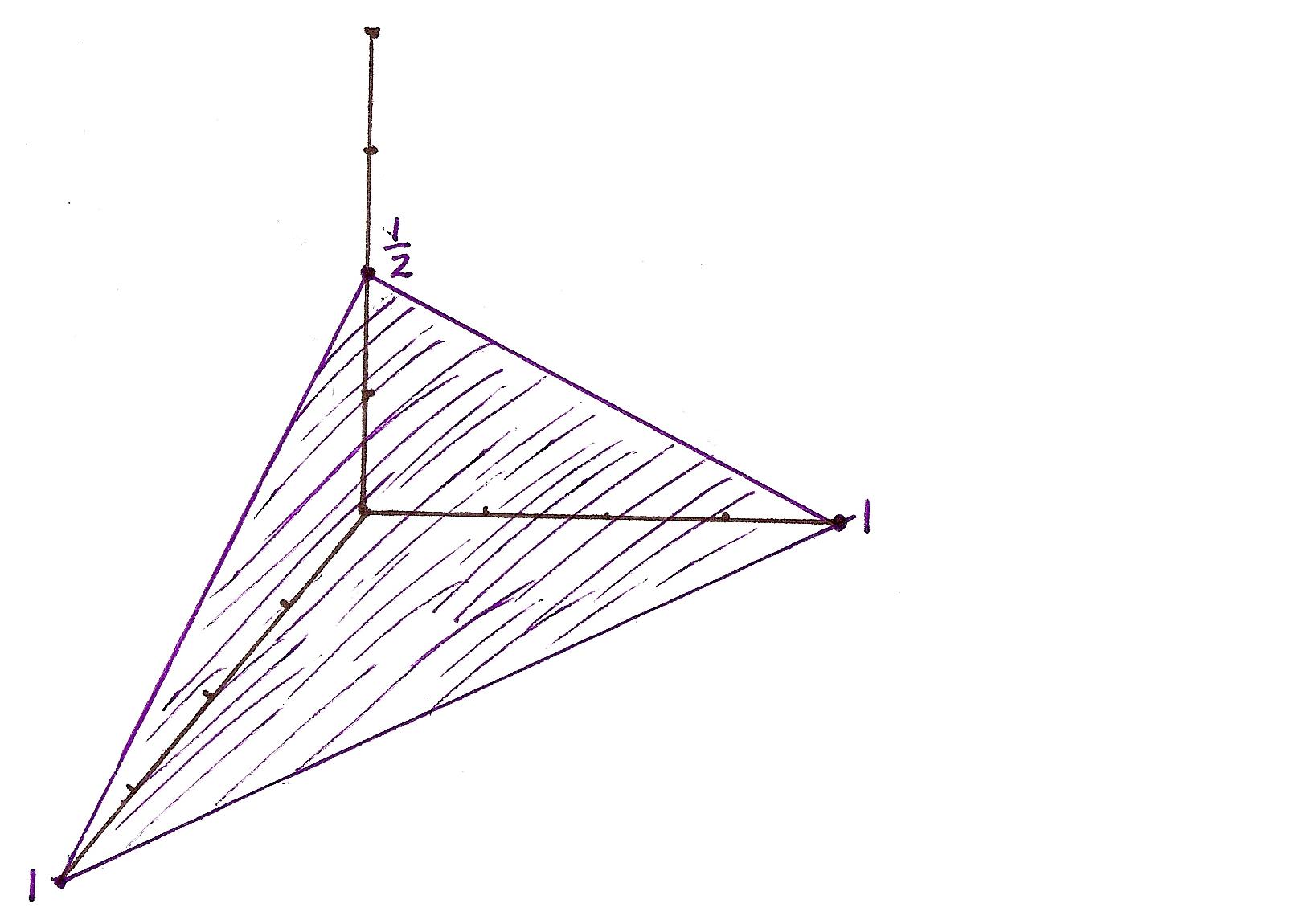
For the Miller indicies (-121) the x, y, and z intercepts are respectively (-1, 1/2, 1). This gives rise to the graph
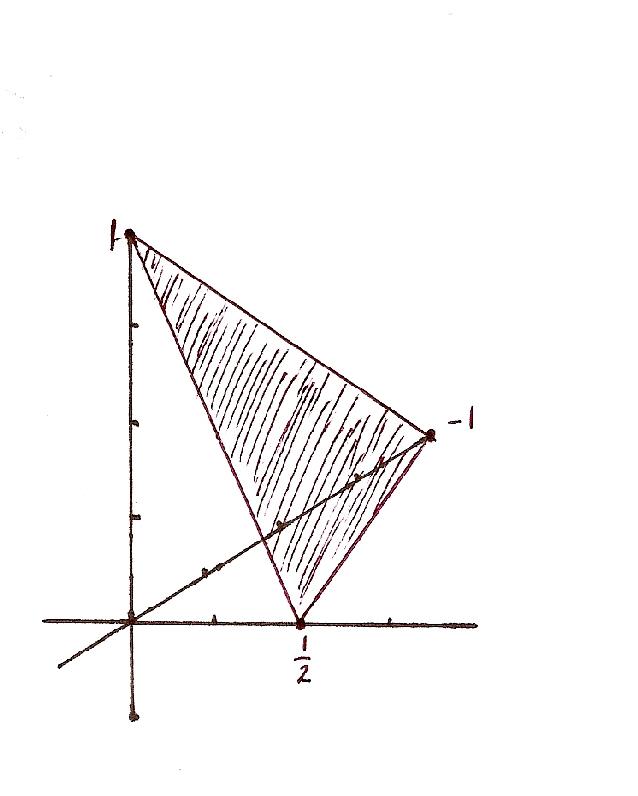
Problem 3
a. fcc and primitive cell
b.
The volume of the primitive cell is Failed to parse (SVG (MathML can be enabled via browser plugin): Invalid response ("Math extension cannot connect to Restbase.") from server "https://wikimedia.org/api/rest_v1/":): {\displaystyle {1\over 4}} the volume of the fcc cell.
c. There are 4 atoms in the fcc cell and 6 in the primitive cell. There are 6 because there is 1 atom per vertex in the primitive cell while the fcc cell has 2 atoms per vertex and one additional atom per face.

